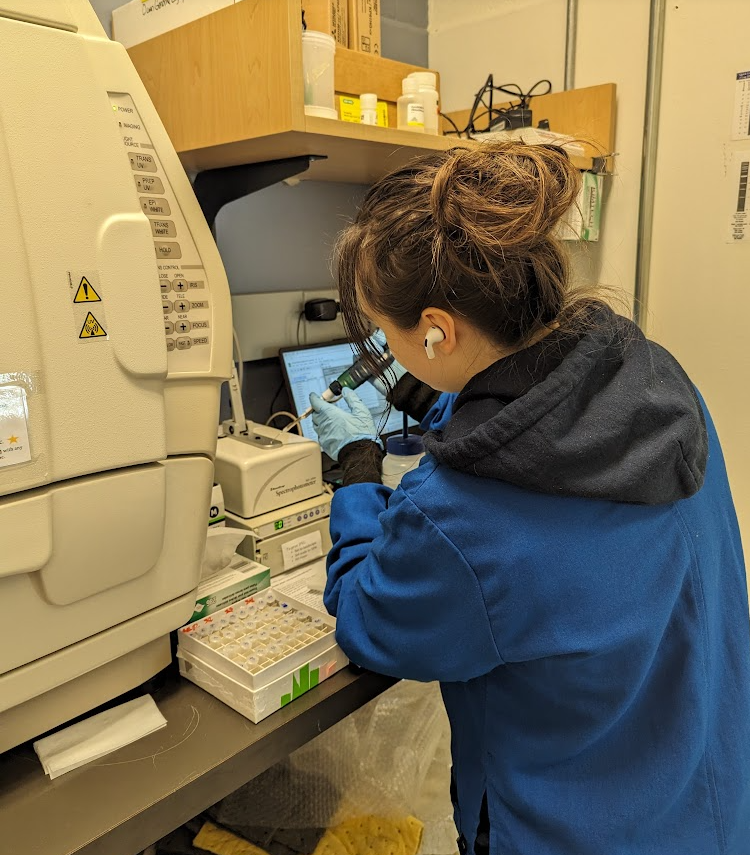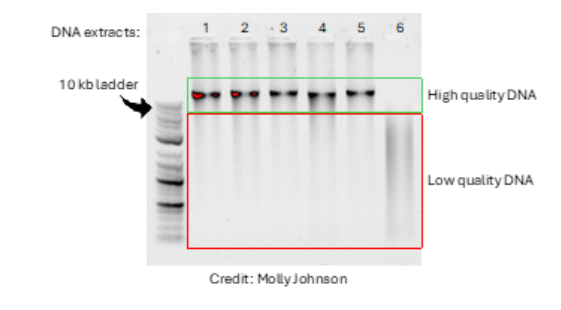Ever wonder what it’s like to work in a marine research lab like Ocean Genome Legacy (OGL)? Let’s follow OGL’s newest student research assistant, co-op Mia Bender, COS‘25, through her week to find out!
This week, Mia has been dissecting lobsters to preserve their tissue in various liquid preservatives. Some samples will be stored in the lab for up to one year, and others will be extracted right away. Click here to watch Mia extract DNA!
After DNA extraction, Mia conducts two quality-control checks on each DNA extract. She visualizes the DNA using gel electrophoresis, where DNA is added to a Jello-like slab, and an electric current separates the DNA based on its size (for DNA preservation, larger is better). She also determines the quantity and purity of DNA in each sample using spectrophotometry, which shoots ultraviolet light through each sample to measure the amounts of DNA in a sample and to detect any contaminants.


Inframe: Mia Bender carrying out DNA extraction
Why is Mia doing all this?
Her project is part of an ongoing OGL student experiment looking into how to improve liquid preservatives so scientists can get high-quality DNA even after tissue samples have been stored for a long time. Being able to preserve DNA in tissue samples in ways that are easy, inexpensive, safe, and effective is incredibly important, not only for OGL but for researchers across many disciplines. Storing samples in liquid preservatives allows researchers to collect samples and analyze them later without losing data or decreasing the sample’s quality.
DNA from the samples Mia preserved and collected this week will be extracted and analyzed over the next year. Once all the data has been collected, we will be able to determine which of the tested preservatives produces the highest quality DNA. We will share this information with other scientists so that they can make informed decisions when preserving tissue samples in their research.
